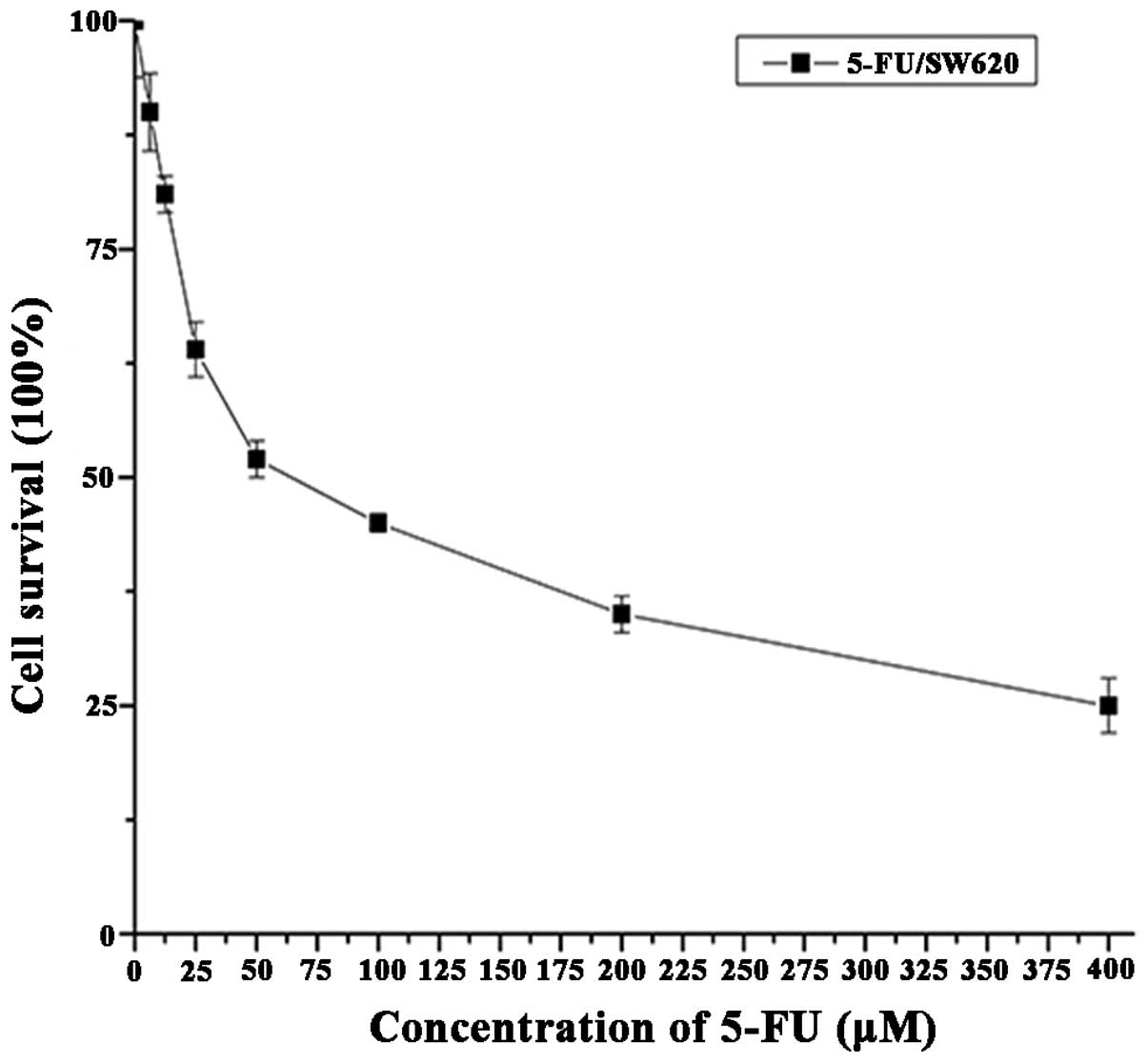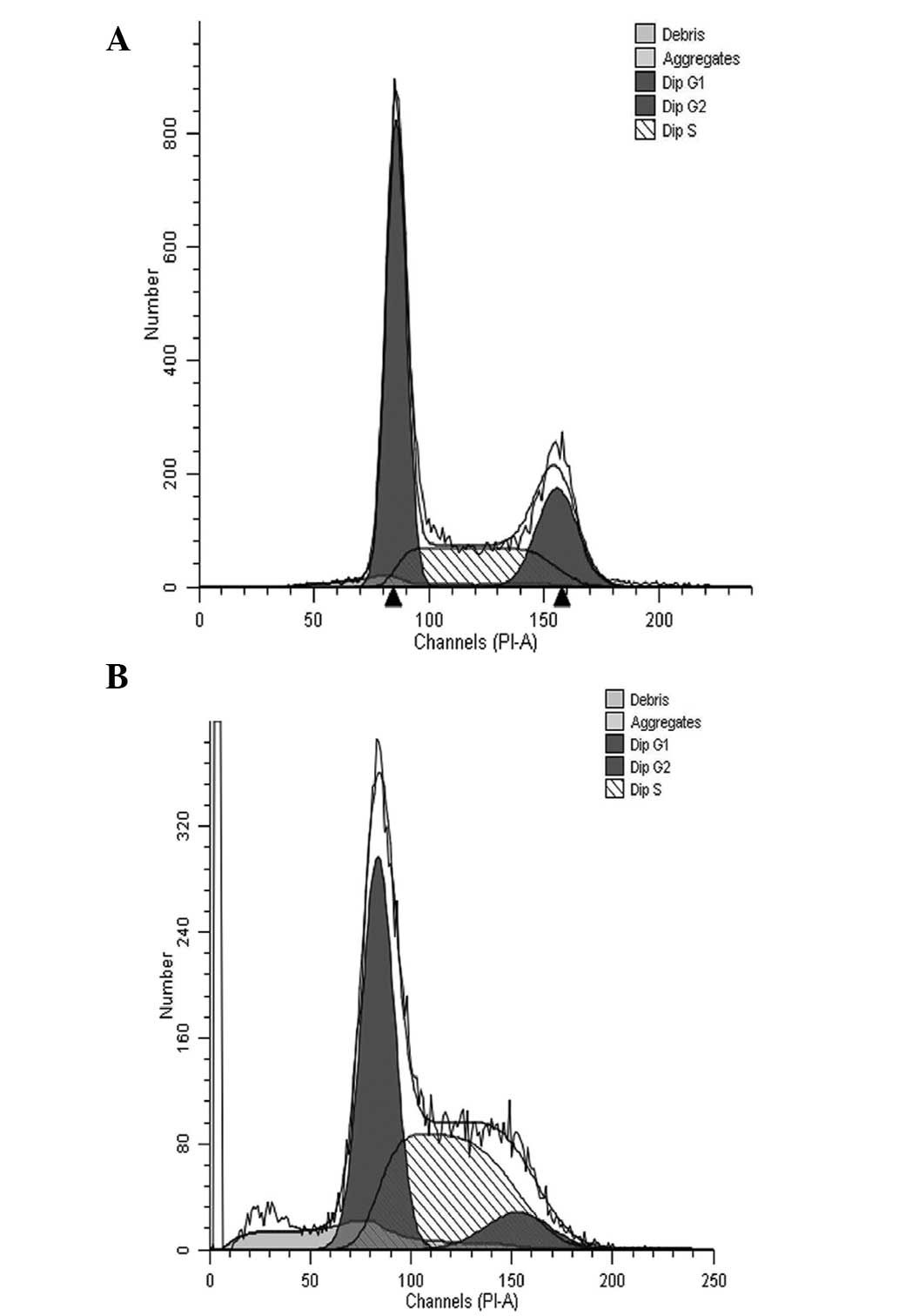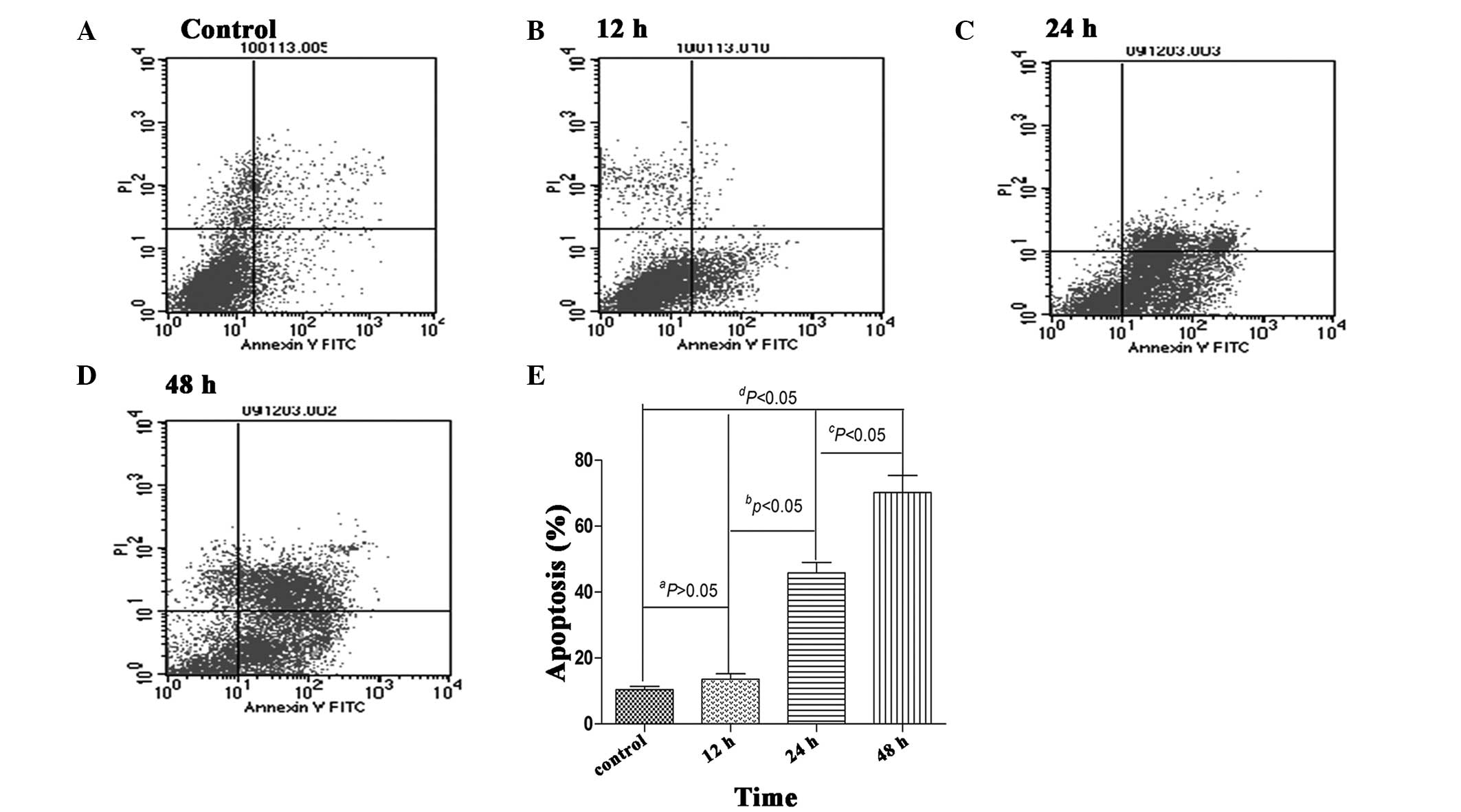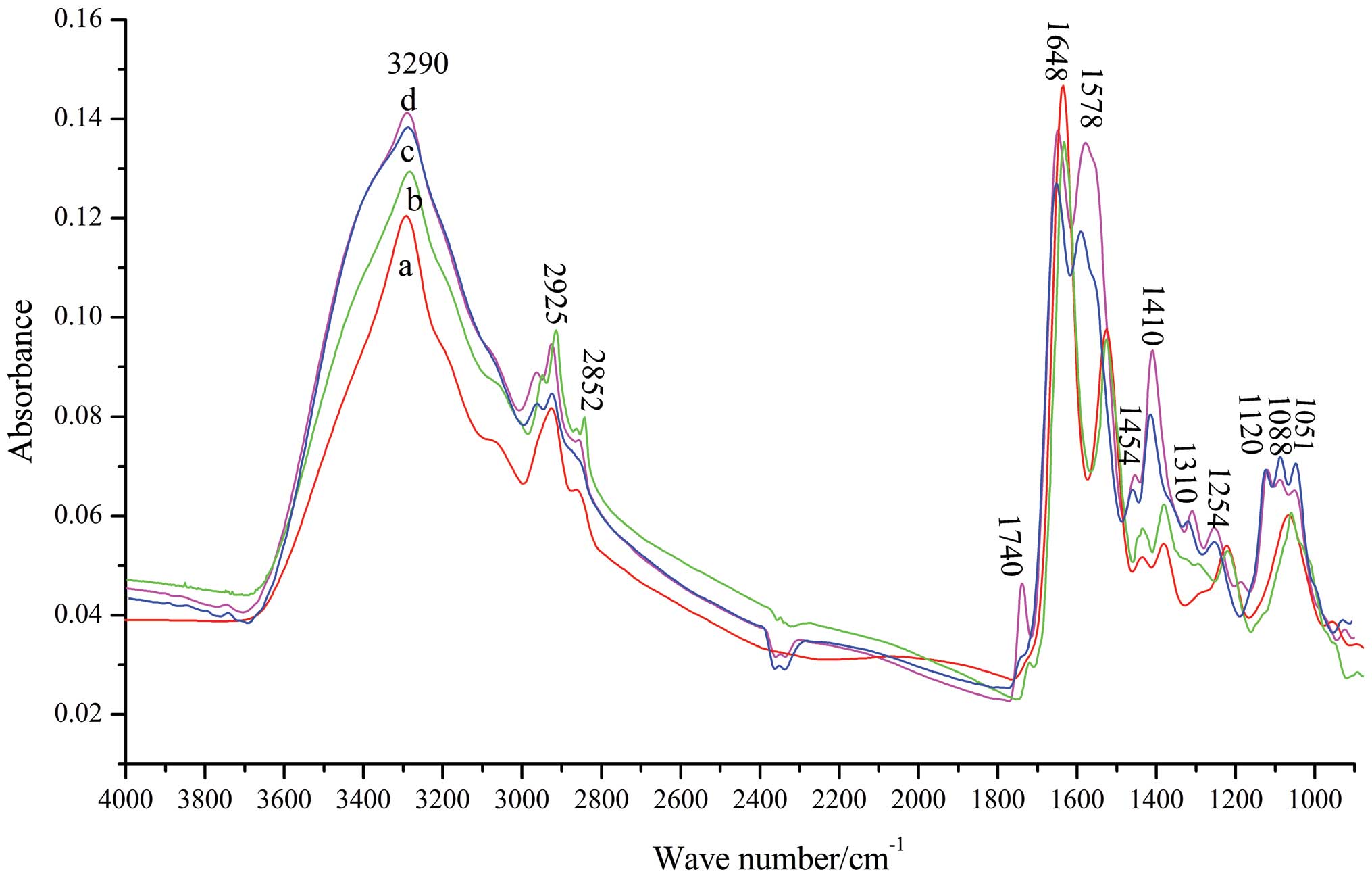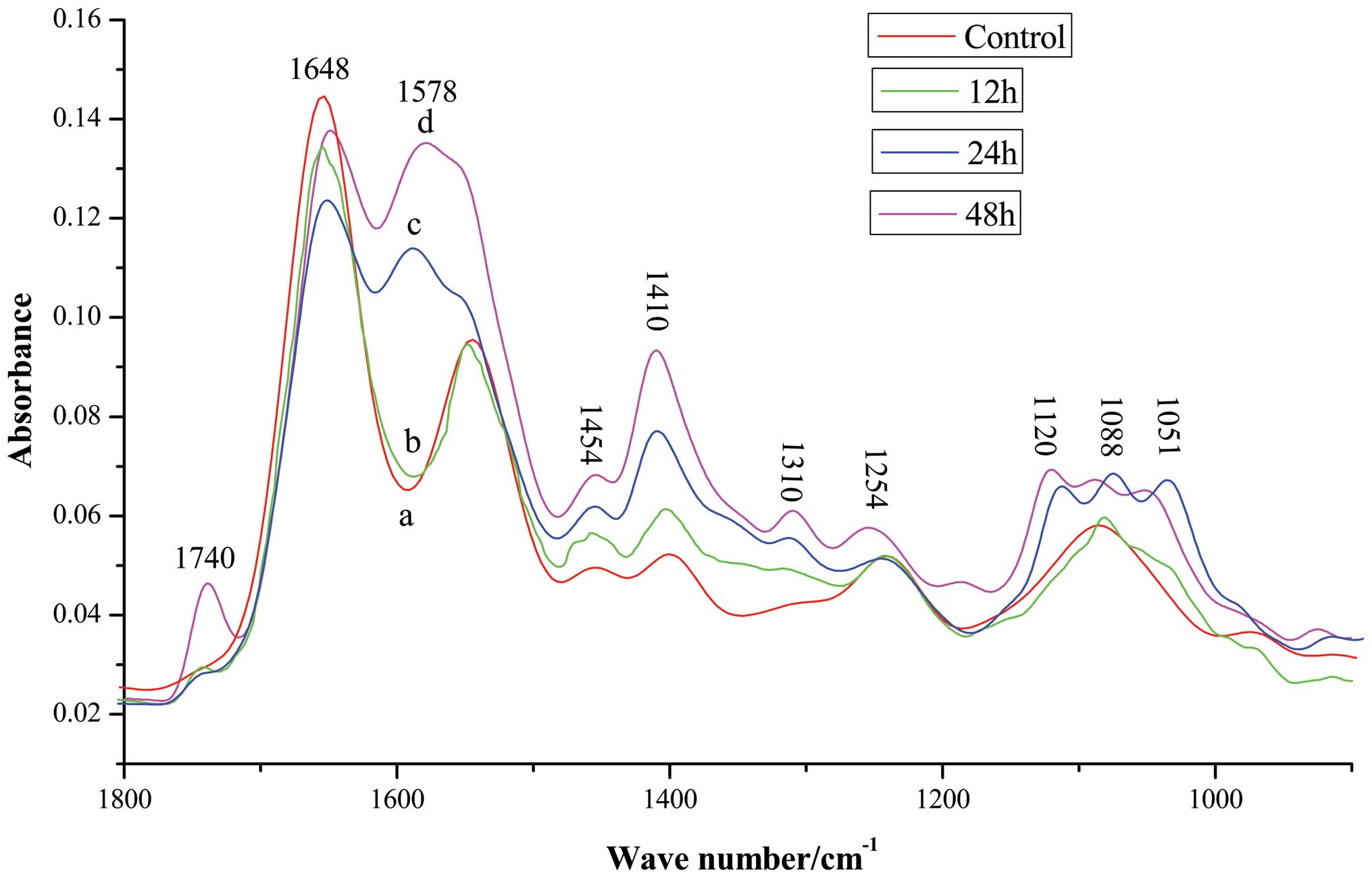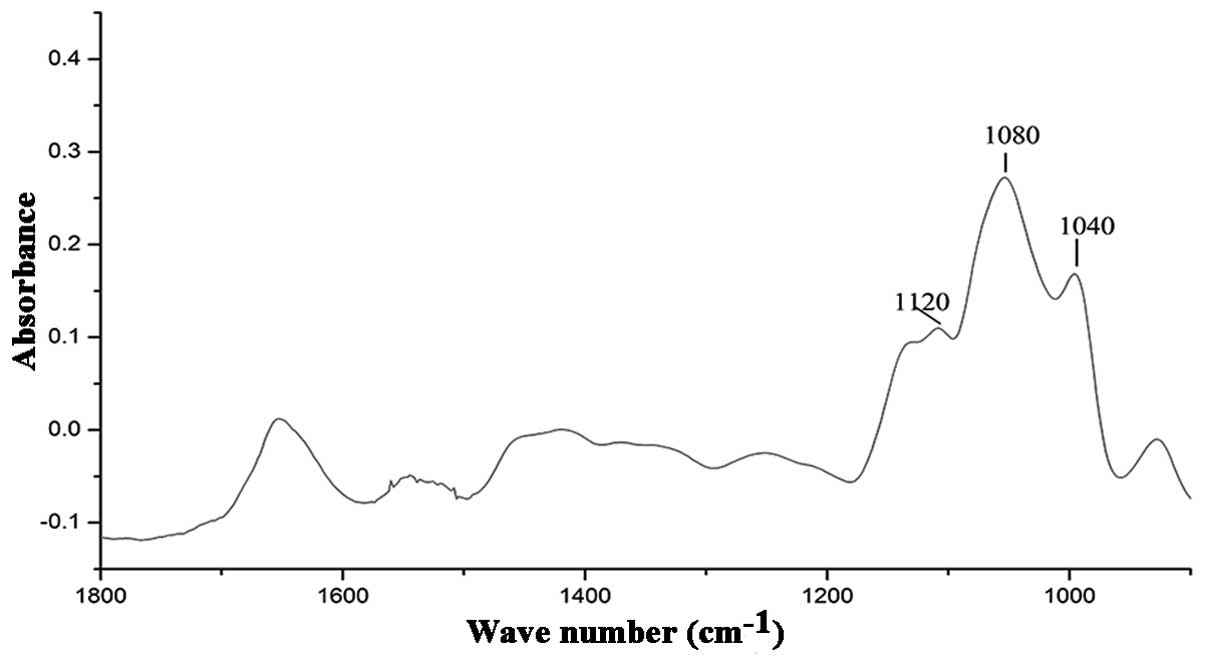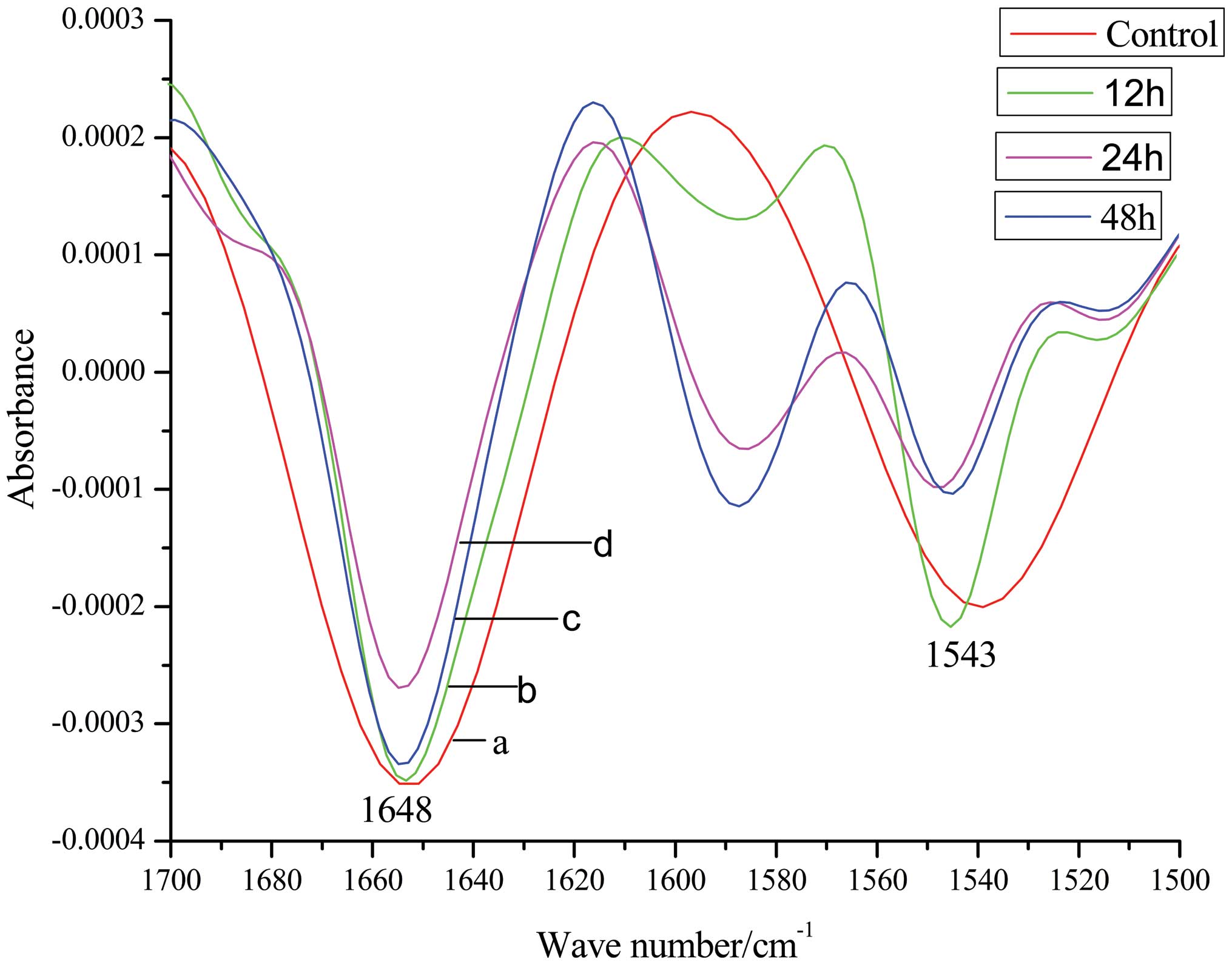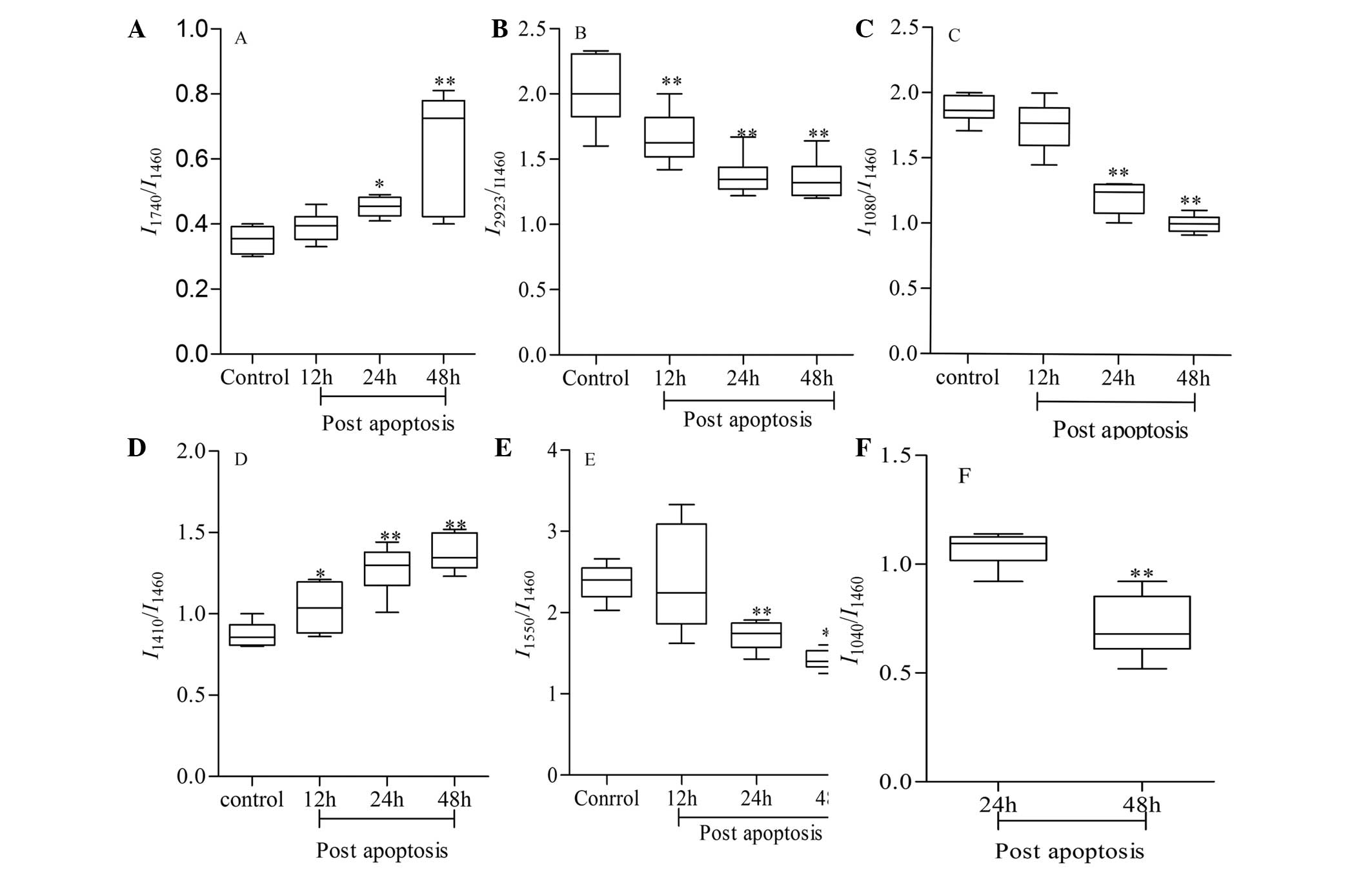|
1
|
Tricoli JV, Seibel NL, Blair DG, Albritton
K and Hayes-Lattin B: Unique characteristics of adolescent and
young adult acute lymphoblastic leukemia, breast cancer, and colon
cancer. J Natl Cancer Inst. 103:628–635. 2011. View Article : Google Scholar : PubMed/NCBI
|
|
2
|
Kushi LH, Byers T, Doyle C, et al:
American cancer society guidelines on nutrition and physical
activity for cancer prevention: reducing the risk of cancer with
healthy food choices and physical activity. CA Cancer J Clin.
56:254–281. 2006. View Article : Google Scholar : PubMed/NCBI
|
|
3
|
Zhao P, Dai M, Chen W and Li N: Cancer
trends in china. Jpn J Clin Oncol. 40:281–285. 2010. View Article : Google Scholar : PubMed/NCBI
|
|
4
|
Sasaki K, Tsuno NH, Sunami E, et al:
Chloroquine potentiates the anti-cancer effect of 5-fluorouracil on
colon cancer cells. BMC Cancer. 10:3702010. View Article : Google Scholar : PubMed/NCBI
|
|
5
|
Folprecht G and Kohne CH: The role of new
agents in the treatment of colorectal cancer. Oncology. 66:1–17.
2004. View Article : Google Scholar : PubMed/NCBI
|
|
6
|
Stelling AL, Toher D, Uckermann O, et al:
Infrared spectroscopic studies of cells and tissues: triple helix
proteins as a potential biomarker for tumors. PLoS One.
8:e583322013. View Article : Google Scholar : PubMed/NCBI
|
|
7
|
Wyatt MD and Wilson DM 3rd: Participation
of DNA repair in the response to 5-fluorouracil. Cell Mol Life Sci.
66:788–799. 2009. View Article : Google Scholar :
|
|
8
|
Rudin CM and Thompson CB: Apoptosis and
disease: regulation and clinical relevance of programmed cell
death. Annu Rev Med. 48:267–281. 1997. View Article : Google Scholar : PubMed/NCBI
|
|
9
|
Chowdhury I, Tharakan B and Bhat GK:
Current concepts in apoptosis: the physiological suicide program
revisited. Cell Mol Biol Lett. 11:506–525. 2006. View Article : Google Scholar : PubMed/NCBI
|
|
10
|
Hengartner MO: The biochemistry of
apoptosis. Nature. 407:770–776. 2000. View
Article : Google Scholar : PubMed/NCBI
|
|
11
|
Deng N, Zheng L, Liu F, Wang L and Duan H:
crcTRP: a translational research platform for colorectal cancer.
Comput Math Methods Med. 2013:9303622013. View Article : Google Scholar : PubMed/NCBI
|
|
12
|
Bellisola G and Sorio C: Infrared
spectroscopy and microscopy in cancer research and diagnosis. Am J
Cancer Res. 2:1–21. 2012.
|
|
13
|
Cheheltani R, Rosano JM, Wang B, Sabri AK,
Pleshko N and Kiani MF: Fourier transform infrared spectroscopic
imaging of cardiac tissue to detect collagen deposition after
myocardial infarction. J Biomed Opt. 17:0560142012. View Article : Google Scholar : PubMed/NCBI
|
|
14
|
Lewis PD, Lewis KE, Ghosal R, et al:
Evaluation of FTIR spectroscopy as a diagnostic tool for lung
cancer using sputum. BMC Cancer. 10:6402010. View Article : Google Scholar : PubMed/NCBI
|
|
15
|
Taylor SE, Cheung KT, Patel II, et al:
Infrared spectroscopy with multivariate analysis to interrogate
endometrial tissue: a novel and objective diagnostic approach. Br J
Cancer. 104:790–797. 2011. View Article : Google Scholar : PubMed/NCBI
|
|
16
|
Banyay M, Sandbrink J, Stromberg R and
Graslund A: Characterization of an RNA bulge structure by fourier
transform infrared spectroscopy. Biochem Biophys Res Commun.
324:634–639. 2004. View Article : Google Scholar : PubMed/NCBI
|
|
17
|
Downes A, Mouras R and Elfick A: Optical
spectroscopy for noninvasive monitoring of stem cell
differentiation. J Biomed Biotechnol. 2010:1018642010. View Article : Google Scholar : PubMed/NCBI
|
|
18
|
Gasparri F and Muzio M: Monitoring of
apoptosis of HL60 cells by fourier-transform infrared spectroscopy.
Biochem J. 369:239–248. 2003. View Article : Google Scholar
|
|
19
|
Zelig U, Kapelushnik J, Moreh R, Mordechai
S and Nathan I: Diagnosis of cell death by means of infrared
spectroscopy. Biophys J. 97:2107–2114. 2009. View Article : Google Scholar : PubMed/NCBI
|
|
20
|
Fanciullino R, Giacometti S, Mercier C, et
al: In vitro and in vivo reversal of resistance to 5-fluorouracil
in colorectal cancer cells with a novel stealth double-liposomal
formulation. Br J Cancer. 97:919–926. 2007.PubMed/NCBI
|
|
21
|
Flower KR, Khalifa I, Bassan P, et al:
Synchrotron FTIR analysis of drug treated ovarian A2780 cells: an
ability to differentiate cell response to different drugs? Analyst.
136:498–507. 2011. View Article : Google Scholar
|
|
22
|
Holman HY, Martin MC, Blakely EA,
Bjornstad K and McKinney WR: IR spectroscopic characteristics of
cell cycle and cell death probed by synchrotron radiation based
fourier transform IR spectromicroscopy. Biopolymers. 57:329–335.
2000. View Article : Google Scholar : PubMed/NCBI
|
|
23
|
Hammiche A, German MJ, Hewitt R, Pollock
HM and Martin FL: Monitoring cell cycle distributions in MCF-7
cells using near-field photothermal microspectroscopy. Biophys J.
88:3699–3706. 2005. View Article : Google Scholar : PubMed/NCBI
|
|
24
|
Ambrosino C, Tarallo R, Bamundo A, et al:
Identification of a hormone-regulated dynamic nuclear actin network
associated with estrogen receptor alpha in human breast cancer cell
nuclei. Mol Cell Proteomics. 9:1352–1367. 2010. View Article : Google Scholar : PubMed/NCBI
|
|
25
|
Wehbe K, Filik J, Frogley MD and Cinque G:
The effect of optical substrates on micro-FTIR analysis of single
mammalian cells. Anal Bioanal Chem. 405:1311–1324. 2013. View Article : Google Scholar :
|
|
26
|
Bali R, Savino L, Ramirez DA, et al:
Macroscopic domain formation during cooling in the platelet plasma
membrane: an issue of low cholesterol content. Biochim Biophys
Acta. 1788:1229–1237. 2009. View Article : Google Scholar : PubMed/NCBI
|
|
27
|
German MJ, Hammiche A, Ragavan N, et al:
Infrared spectroscopy with multivariate analysis potentially
facilitates the segregation of different types of prostate cell.
Biophys J. 90:3783–3795. 2006. View Article : Google Scholar : PubMed/NCBI
|
|
28
|
Toyran N, Lasch P, Naumann D, Turan B and
Severcan F: Early alterations in myocardia and vessels of the
diabetic rat heart: an FTIR microspectroscopic study. Biochem J.
397:427–436. 2006. View Article : Google Scholar : PubMed/NCBI
|
|
29
|
Fogarty SW, Patel II, Trevisan J, et al:
Sub-cellular spectrochemical imaging of isolated human corneal
cells employing synchrotron radiation-based Fourier-transform
infrared microspectroscopy. Analyst. 138:240–248. 2013. View Article : Google Scholar
|
|
30
|
Banyay M, Sarkar M and Graslund A: A
library of IR bands of nucleic acids in solution. Biophys Chem.
104:477–488. 2003. View Article : Google Scholar : PubMed/NCBI
|
|
31
|
Mello ML and Vidal BC: Changes in the
infrared microspectroscopic characteristics of DNA caused by
cationic elements, different base richness and single-stranded
form. PLoS One. 7:e431692012. View Article : Google Scholar : PubMed/NCBI
|
|
32
|
Batard E, Jamme F, Boutoille D, et al:
Fourier transform infrared microspectroscopy of endocarditis
vegetation. Appl Spectrosc. 64:901–906. 2010. View Article : Google Scholar : PubMed/NCBI
|
|
33
|
Abbott GW, Ramesh B and Srai SK:
Interaction between soluble and membrane-embedded potassium channel
peptides monitored by fourier transform infrared spectroscopy. PLoS
One. 7:e490702012. View Article : Google Scholar : PubMed/NCBI
|
|
34
|
Mantsch HH, Choo-Smith L-Pi and Shaw RA:
Vibrational spectroscopy and medicine: an alliance in the making.
Vib Spectrosc. 30:31–41. 2002. View Article : Google Scholar
|
|
35
|
Gautam R, Chandrasekar B, Deobagkar-Lele
M, et al: Identification of early biomarkers during
acetaminophen-induced hepatotoxicity by fourier transform infrared
microspectroscopy. PLoS One. 7:e455212012. View Article : Google Scholar : PubMed/NCBI
|



